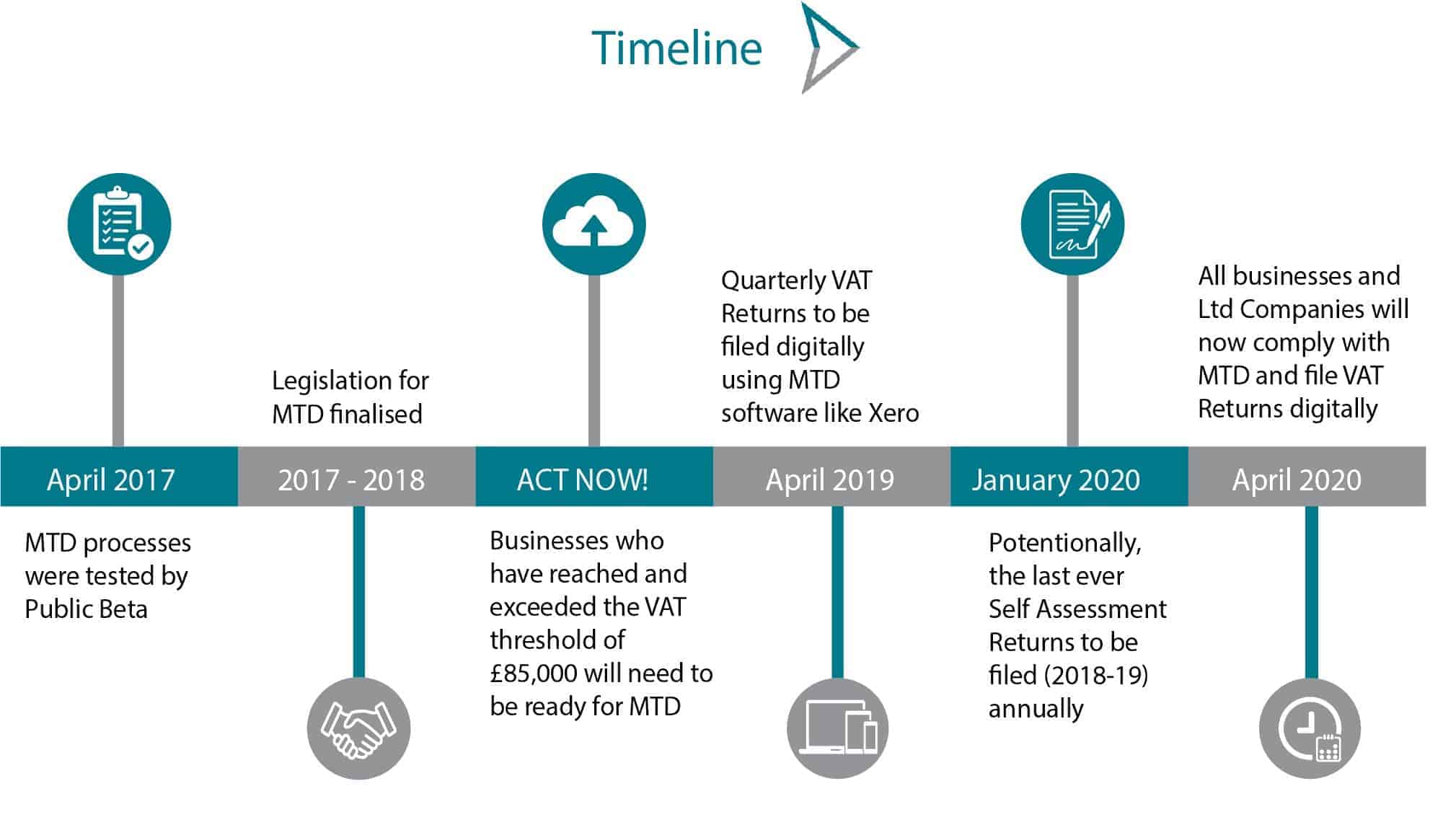What is Making Tax Digital for VAT? Find out with this guide.
Making tax digital for VAT (value-added tax), or “MTD for VAT”, is a modern solution for businesses and individuals to manage tax returns. Instead of manually handling your taxes you’ll be using software that digitally handles them for you.
MTD for VAT opens a door to an entirely digital process of accounting via software. It’s not only about digitally filing VAT returns, but it’s also about keeping and preserving records digitally.
This method brings the UK to one of the world’s leading tax systems that rely on processing all taxes online.
“MTD for VAT could be a modern revolution in business management.”
Here’s a short video of Bean Ninjas accountant Tom Mercer explaining Making Tax Digital for VAT:
Making Tax Digital for VAT – HMRC’s Goals
HMRC is keeping up with technology by heading towards pure digitalization.
Their first focus was VAT, and once it’s completed, the UK will move on to other forms of tax. The goal is to combine all tax-related activities and solve them from a digital angle.
HMRC made VAT compliance with MTD become mandatory on April 1, 2019.
They also announced a ‘soft landing’ period allowing businesses to update their legacy systems. This period is the first twelve months, so people can fully prepare and adjust.
With this change, HMRC provides a more effective, more efficient and much easier tax system.
Of course, HMRC already had businesses and agents trying out the digital tax process. Armed with required software and instructions, the businesses and agents have been updating HMRC on their digital journey.
MTD’s current plan is to incorporate other taxes by April 2020.
Making Tax Digital for VAT – Why should small business owners care?
Does this digital movement change your everyday work, and if so, how?
HMRC expect that most people will be able to fulfill MTD’s legal obligations. People won’t have to follow the rules of MTD if it’s not reasonably practicable because of age, disability, religion, insolvency procedures, the remoteness of the location, etc.
Making Tax Digital for VAT Threshold
If you are registered for VAT and your taxable turnover is above the VAT registration threshold (currently £85,000), you must keep digital business records and send your VAT returns to HMRC using MTD -compatible software.
If your taxable turnover is below the VAT registration threshold (currently £85,000) you will be exempted.
Making Tax Digital Timeline
(Source: https://www.advaloremgroup.uk)
Benefits of Making Tax Digital for small businesses
Hopes for this idea are preventions of tax fraud and minimizing errors. Online marketplaces will be held liable for VAT compliance of businesses.
As we all know it’s very easy to change the content in a spreadsheet cell, accidents happen due to human error. When working with numbers, one mistake could cost a fortune.
With MTD all records are logged digitally and that reduces mistakes.
With this method HMRC will directly pass information to you, update you and alert you if any suspicious behavior comes up. This digital transformation allows you to access your financial reports and records through any of your devices.
VAT Returns will be processed almost in real time, which means no more holding on the telephone, or standing in line. So with this done much faster, we gain financial clarity.
MTD should monitor and enforce these laws.
Related:
MTD for VAT Compliance and penalties
There are three main requirements for VAT compliance, those are:
- All data must be recorded digitally.
- Transfer from one system to another must be done digitally.
- Submission of a tax return to HMRC must be done via HMRC’s API.
To be MTD for VAT compliant, any data that are related to your taxes must be recorded and stored in commercial software.
All the software you’ll use will be digitally linked and people won’t be permitted to manually copy and paste the information into the software. You’ll have a digital link which allows data to be transferred between different types of software and computer systems.
Formulae are also included in spreadsheets as a part of the VAT calculation.
Each type of adjustment must be a digital record, not the details of the calculations underlying them.
You can use VAT schemes according to HMRC’s regulations.
Records you’ll need to include in the MTD for VAT process are:
- The time of supply
- The value of supply
- The rate of VAT charged
- Business name
- Principle business address
- Personal VAT registration number
- Details of VAT schemes you’re using
Listen to one of our Bean Ninjas accountants, Tom Mercer for further explanation.
Not sure what records you’ll need to include in your Making Tax Digital for VAT submission to HMRC? Read this. Share on XXero’s ‘pay now’ button; “This allows customers to pay you at just one click of a button.”
Recommended MTD for VAT Software: Xero

Xero is a cloud-based accounting software platform, with over 1.5 million users worldwide. With many useful features and over 700+ time-saving apps that connect with Xero, it’s our preferred choice for small business accounting.
You can read our comparison of popular accounting software here to find out additional reasons why we recommend Xero.
If you’re not familiar with cloud-accounting software, you can also listen to our interview with cloud-accounting expert Heather Smith about the benefits.
How Xero is making MTD for VAT easier
Xero is one of the VAT commercial software solutions. Later this year, once everything gets tested and the trial period is completed, Xero will be on the MTD VAT suppliers list.
Xero partners and customers can participate in the trial.
The VAT return will be the same, but HMRC will provide the returns through software, instead of people choosing dates for a return themselves.
Using digital links and the ability of Xero to integrate with other software you can easily move your data. You’ll be able to access your data wherever you are using a device of your choosing.
All of your information will be in one place and you’ll be able to see it clearly. You’ll have the freedom to design your own workspace by dividing work in different tables, sections, etc.
Xero’s new MTD VAT will be available to customers with no upgrade fees and with as minimal impact as possible.
How to get started with Xero
Xero is a very well-organized software platform, but it can take quite a bit of time to explore the many features it has to offer.
There are several ways to get started with Xero:
- Read the articles and watch the DIY videos on Xero’s official website.
- Download our Xero small business toolkit and DIY
- If you prefer to save time and headaches trying to DIY, sign up for a Bean Ninjas Xero setup.
- Already set up and want help to better understand Xero best practices and how you can best use it for your small business? Check out our Xero training options.
“Xero is creating a new VAT return experience so it can support the changes that MTD introduces.”
Further Making Tax Digital for VAT Resources
For more information about MTD for VAT visit the links below:
1. HMRC – Making Tax Digital
2. Making Tax Digital – Everything you need to know | Xero UK
3. What is Making Tax Digital (MTD)? Understanding HMRC’s new tax system






